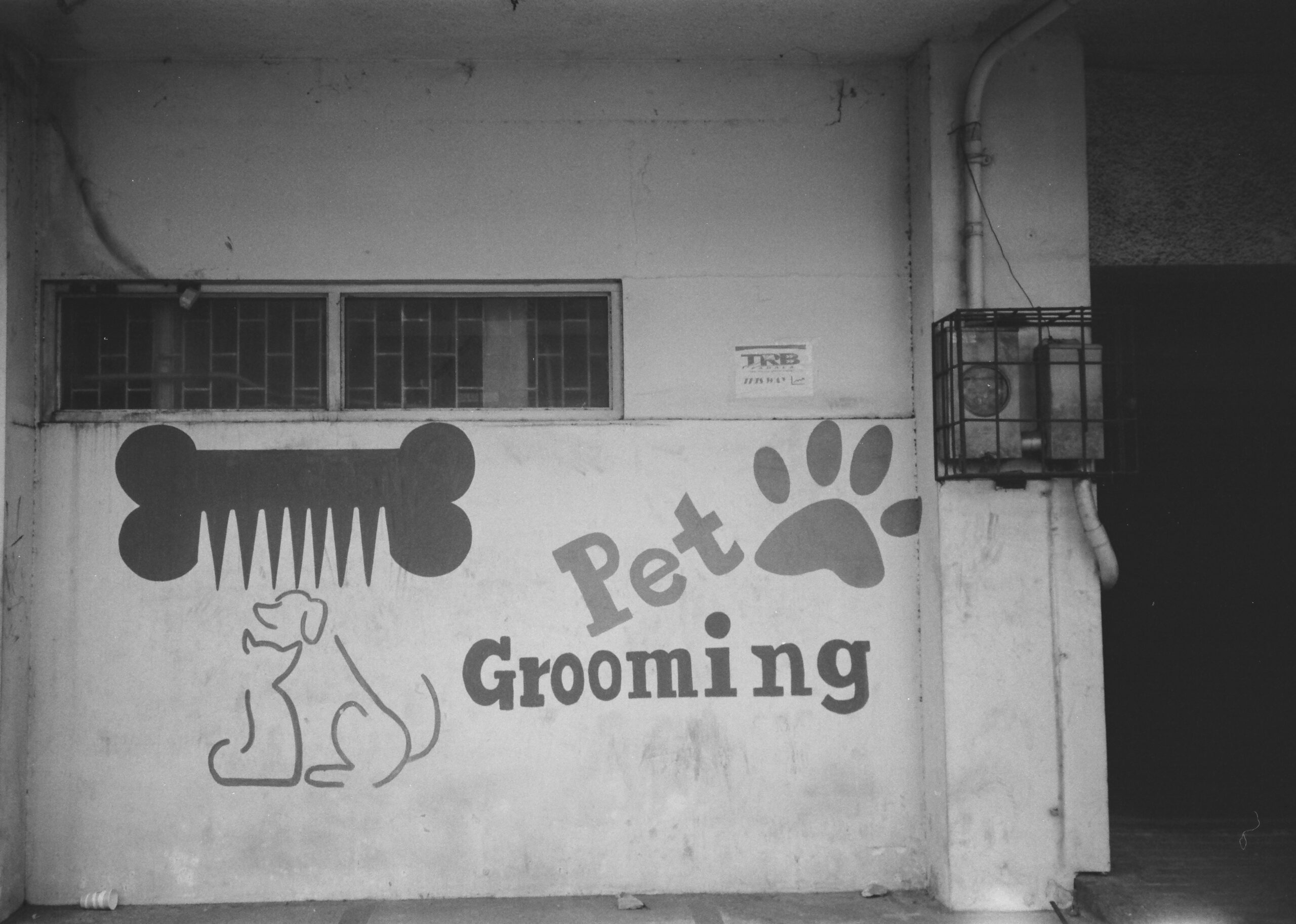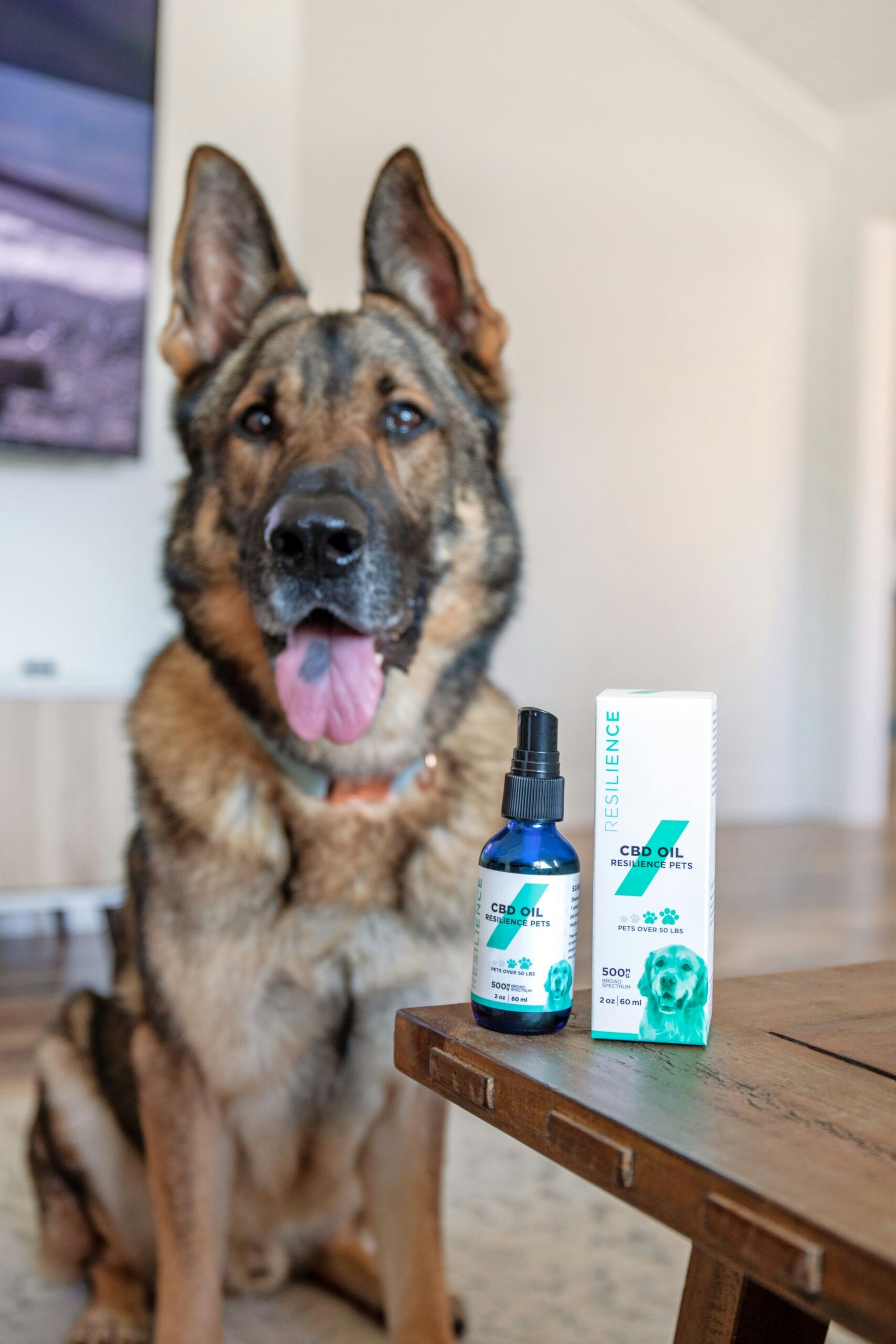Emerging Trends in Pet Care: Innovations and Insights for Modern Pet Owners
Introduction: The Evolution of Pet Care
The landscape of pet care has undergone substantial transformation over the decades, mirroring the evolving relationship between pets and their owners. Historically, pets were primarily viewed as working animals or companions with minimal requirements. However, modern times have seen a paradigm shift, positioning pets as beloved family members, thus precipitating significant advancements in pet care. This evolution is largely influenced by a growing bond between humans and their pets and is reflected in various facets of the industry.
One of the foremost drivers of these changes has been technology. Innovative breakthroughs have revolutionized everything from health monitoring to daily care. For instance, wearable tech for pets enables owners to track their pets’ vital signs and activity levels, ensuring timely interventions when health anomalies are detected. Similarly, smart feeders and automated litter boxes have optimized the convenience of pet ownership, providing custom nutrition plans and maintaining a clean environment without constant human oversight.
Furthermore, consumer expectations have considerably reshaped the pet care landscape. Modern pet owners demand higher standards of safety, quality, and aesthetic appeal in pet-related products and services. This shift has propelled the industry to adopt more rigorous regulatory standards and to offer premium products, ranging from organic pet foods to eco-friendly grooming supplies. Such trends illustrate how discerning pet owners have become, prioritizing the health and well-being of their furred, feathered, or finned companions.
Lastly, the pet care industry itself has experienced exponential growth, reflecting the increasing investment owners are willing to make in maintaining their pets’ health and happiness. The surge in pet ownership globally has spurred the development of specialized veterinary services, luxury pet boarding facilities, and even pet-specific wellness programs. This growth underscores the central role pets now play in their owners’ lives, further driving innovation and excellence in pet care practices.
Trend 1: High-Tech Pet Products
High-tech pet products are revolutionizing the way pet owners care for their furry companions. Among these innovations, GPS-enabled collars stand out as essential tools for pet safety. These collars allow pet owners to track their pets’ locations in real-time, ensuring they can quickly find their pets if they wander off. Additionally, many of these collars come equipped with features such as activity monitoring, which keeps track of a pet’s fitness levels and overall health.
Pet cameras have also seen a significant rise in popularity. These devices not only allow owners to keep an eye on their pets while they are away but also provide a means to interact with them through two-way audio and video. Some advanced models even offer treat dispensing capabilities, ensuring that pets feel engaged and rewarded even in the absence of their owners.
Automated feeders provide another layer of convenience by ensuring pets receive their meals at regular intervals. These devices are particularly beneficial for pet owners with busy schedules, as they can program feeding times and portion sizes to maintain a consistent diet for their pets. Moreover, some automated feeders come with integrated health monitoring systems that track the nutritional intake of pets, aiding in maintaining optimal health.
Smart toys are also making waves in the pet care industry, offering a combination of entertainment and mental stimulation. These toys can be programmed to challenge pets in various ways, promoting problem-solving skills and keeping them mentally active. Interactive features such as motion sensors and customizable play patterns help in reducing boredom and anxiety, contributing to a balanced lifestyle for pets.
Overall, these high-tech innovations are transforming pet care by enhancing safety, improving health monitoring, and providing entertainment. They offer a level of convenience that modern pet owners can greatly benefit from, making it easier to maintain a healthy and happy life for their pets.
Trend 2: Holistic Health and Wellness
In recent years, there has been a significant shift in the pet care industry towards holistic health and wellness. This trend emphasizes a more comprehensive approach to pet health, integrating various natural and alternative treatments to enhance the overall well-being of pets. One of the most noticeable developments is the growing popularity of natural and organic pet foods. Pet owners are increasingly opting for diets that exclude artificial additives, preservatives, and fillers, recognizing the benefits of wholesome, nutrient-rich ingredients. Such dietary choices are believed to improve pet vitality, promote healthier coats, and reduce incidents of allergies and digestive issues.
In addition to changes in diet, pet supplements have also seen a rise in demand. Products containing probiotics, omega-3 fatty acids, and glucosamine are frequently used to support digestive health, improve joint function, and strengthen the immune system. The trend towards holistic pet wellness does not stop at food and supplements; alternative treatments like aromatherapy are also gaining traction. Essential oils, when used correctly, can offer calming effects, relieve anxiety, and even help with specific ailments such as skin irritations. However, it is crucial for pet owners to consult with a veterinarian before introducing any new treatments to ensure they are safe and appropriate for their pets.
Moreover, alternative therapies such as acupuncture and hydrotherapy are becoming mainstream for pets dealing with chronic pain, arthritis, or post-surgery rehabilitation. Acupuncture, traditionally used in human medicine, involves inserting thin needles into specific points on the body to alleviate pain and stimulate healing. Similarly, hydrotherapy, which utilizes aquatic exercises, can provide low-impact physical therapy that aids in muscle strengthening and joint mobility. These therapies are celebrated for their ability to offer pain relief, enhance recovery, and improve the quality of life for pets.
The growing emphasis on holistic health and wellness is a testament to the evolving relationship between pets and their owners. By recognizing and catering to the comprehensive needs of their furry companions, pet owners can ensure happier, healthier lives for their pets.
Trend 3: Subscription Services and Personalized Products
The landscape of pet care is undergoing significant transformation, driven by the rise of subscription services and personalized products. These innovations cater not only to the convenience of pet owners but also to the unique needs of individual pets, offering tailored experiences that enhance quality of life for our furry companions. Subscription services, characterized by their recurring delivery model, have seen considerable adoption among modern pet owners seeking hassle-free solutions to their pets’ needs. From customized meals to curated toy boxes, these monthly deliveries bring a new level of sophistication to pet care.
One notable development is the emergence of personalized pet food subscriptions. Companies in this space use data-driven approaches, analyzing pets’ age, breed, weight, and dietary restrictions to formulate meals that meet specific nutritional requirements. This level of customization ensures that pets receive balanced diets that support their health and well-being. By transitioning from generic pet food to personalized options, pet owners can address issues like allergies or digestive sensitivities more effectively, contributing to overall better health outcomes for their animals.
In addition to tailored nutrition, subscription boxes offering a variety of pet products have gained popularity. These boxes often include a mix of toys, grooming supplies, and treats, each selected based on the pet’s preferences and needs. For instance, a dog who enjoys chewing might receive durable, engaging toys to prevent boredom and destructive behavior. Similarly, grooming products such as specialized shampoos or dental care items tailored to individual pets help maintain hygiene and prevent health problems.
The convenience factor of these subscription services cannot be overstated. Busy pet owners appreciate the ease of having high-quality, relevant products delivered to their doorstep regularly, eliminating the need for frequent trips to pet stores. This ongoing delivery system ensures that pets’ needs are consistently met without interruptions, contributing to a more stable and supportive environment for pets and their owners.
Trend 4: Pet-Friendly Travel and Accommodations
The pet care industry has significantly evolved, with pet-friendly travel and accommodations emerging as a prominent trend. This trend caters to the increasing number of pet owners who wish to travel without leaving their furry companions behind. The rise of pet-friendly travel services includes specialized airlines for pets, pet-friendly hotels, and a noticeable increase in destinations that warmly welcome pets.
New services have sprouted to meet this burgeoning demand. Airlines now offer pet-specific services, ensuring safe and comfortable air travel for pets. These services range from climate-controlled cabins to in-flight pet attendants. Additionally, the hospitality industry has stepped up by providing an array of pet-friendly accommodations. Many hotels now offer amenities like pet beds, treats, and designated pet areas, enhancing the stay for both pets and their owners.
The number of destinations embracing pet-friendly policies has surged. Parks, beaches, and even urban areas now offer amenities tailored to pets, such as designated play areas, pet-friendly cafes, and water stations. This inclusivity ensures that pet owners can enjoy their vacations without the hassle of finding suitable arrangements for their pets.
Traveling with pets has its unique set of challenges, but several tips can make the experience smoother. Pre-trip preparations are crucial; ensuring pets are comfortable with car rides, booking pet-friendly accommodations well in advance, and packing essentials like their favorite toys, food, and water. Moreover, pet owners should always have their pet’s health records handy and be aware of any pet regulations at their destination.
The benefits of these developments are manifold. Pet owners can now seamlessly integrate their pets into their travel plans, fostering stronger bonds and creating shared memories. This trend not only satisfies the growing desire for inclusive travel experiences but also promotes a sense of community among pet owners who share a love for exploration. As the industry continues to innovate, the future of pet-friendly travel looks promising.
Trend 5: Telehealth for Pets
In recent years, telehealth services for pets have emerged as a significant trend reshaping veterinary care, paralleling the rise of telemedicine in human healthcare. This innovative approach encompasses virtual vet consultations, remote monitoring, and online platforms offering medical advice, enhancing accessibility and convenience for pet owners.
Virtual vet consultations have become particularly popular, allowing pet owners to schedule appointments with veterinarians without leaving their homes. These digital consultations are not only convenient but can also be lifesaving in urgent situations where immediate advice is required. By using video calls, veterinarians can observe pets in their home environments, which often results in more accurate diagnoses and tailored treatment plans. Additionally, this method significantly reduces the anxiety and discomfort that many pets experience during in-person visits.
Remote monitoring is another key aspect of telehealth services for pets. Advances in technology have led to the development of numerous devices and applications that enable pet owners to keep track of their pets’ health metrics in real-time. These tools can monitor activities such as heart rate, sleeping patterns, and even nutritional intake. Such data can then be transmitted directly to veterinarians, who can promptly identify any potential health issues and recommend appropriate interventions. This continuous monitoring ensures that pets receive timely care, ultimately leading to better health outcomes.
Online platforms dedicated to pet healthcare have also proliferated, providing a wealth of resources for pet owners seeking medical advice. These platforms often feature forums, articles, and interactive tools that help pet owners understand symptoms, manage chronic conditions, and make informed decisions regarding their pets’ health. By offering easy access to professional advice and educational material, these platforms empower pet owners to take proactive steps in maintaining their pets’ wellbeing.
Overall, telehealth services for pets offer a blend of accessibility, timely care, and reduced stress, making veterinary care more approachable for modern pet owners. This trend is likely to continue evolving, driven by ongoing technological advancements and an increasing demand for convenient, high-quality pet healthcare solutions.
Trend 6: Sustainable and Eco-Friendly Pet Products
As environmental awareness grows, the pet care industry is witnessing a significant shift toward sustainable and eco-friendly pet products. Modern pet owners are increasingly seeking out options that not only cater to their pets’ needs but also minimize environmental impact. This transformation in the pet care market involves a wide range of products, including biodegradable toys, recyclable materials, sustainable pet foods, and eco-conscious grooming supplies.
One of the key areas of this trend is the move towards biodegradable pet toys. Traditional plastic toys often contribute to landfill waste and environmental degradation. In contrast, toys made from natural fibers, such as hemp or cotton, decompose naturally and reduce the ecological footprint of pet care. Additionally, the use of recyclable materials in the manufacturing of pet products is on the rise. Pet owners are encouraged to select products that utilize recycled plastics or metals, helping to create a circular economy and reduce waste.
The interest in sustainable pet foods is also becoming prominent. Many pet owners are opting for pet food brands that emphasize organic ingredients, local sourcing, and sustainable farming practices. These brands often avoid preservatives and artificial additives, promoting better health for pets while supporting environmental sustainability. Such choices reflect a wider awareness of the nexus between diet, health, and ecological stewardship.
Eco-conscious grooming supplies are another crucial aspect of this trend. Shampoos, conditioners, and other grooming products made from natural, non-toxic ingredients are preferred by pet owners looking to avoid chemicals that can be harmful to both pets and the environment. Packaging is also a critical consideration—biodegradable or recyclable packaging solutions are gaining popularity for their reduced environmental impact.
The importance of sustainability in the pet care industry cannot be overstated. As consumers, pet owners have the power to drive change by making environmentally responsible choices. By opting for sustainable pet products, they contribute to a healthier planet while ensuring their pets’ well-being. This shift represents a broader commitment to environmental responsibility, resonating within the community of modern pet owners and beyond.
Conclusion: The Future of Pet Care
As we have explored throughout this blog, the pet care industry is undergoing significant transformations driven by technological advancements and an evolving societal perspective on the human-animal bond. From the rise of personalized pet nutrition and telehealth services to the integration of smart devices and sustainable pet products, the landscape for modern pet owners is becoming increasingly sophisticated and tailored to meet the unique needs of each pet.
Continuous innovation is at the heart of these changes, enabling pet owners to provide a higher standard of care and quality of life for their furry companions. This trend is expected to accelerate as more companies invest in research and development, bringing novel solutions such as advanced pet wearables, more effective veterinary treatments, and AI-driven behavioral analysis tools. Additionally, the emphasis on sustainability is likely to grow, with eco-friendly products and practices becoming standard considerations for conscientious pet owners.
The relationship between pets and their owners is also evolving. Pets are now often viewed as integral members of the family, driving demand for a holistic approach to their well-being that encompasses physical health, mental stimulation, and emotional enrichment. This shift is reflected in emerging services such as pet mental health therapy, interactive toys, and comprehensive wellness plans that are designed to cater to the broad spectrum of a pet’s needs.
Looking ahead, we can anticipate several potential trends that may define the future of pet care. These include further advancements in biotechnology, such as gene editing for disease prevention, and the normalization of pet-friendly workplaces which foster a more inclusive environment for pet owners. Additionally, increased awareness around pet aging and senior care will likely result in specialized products and services tailored to older pets.
Ultimately, as the bond between humans and their pets deepens, the pet care industry will continue to innovate and adapt, ensuring that both pets and their owners can enjoy a healthier, happier, and more fulfilling relationship.















Post Comment